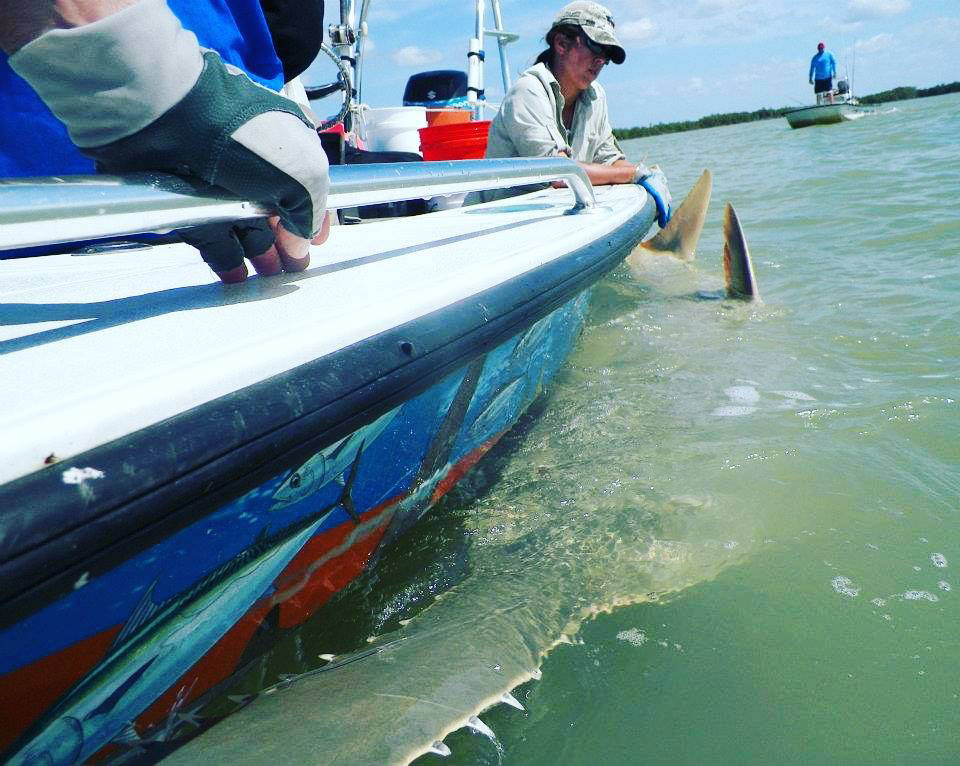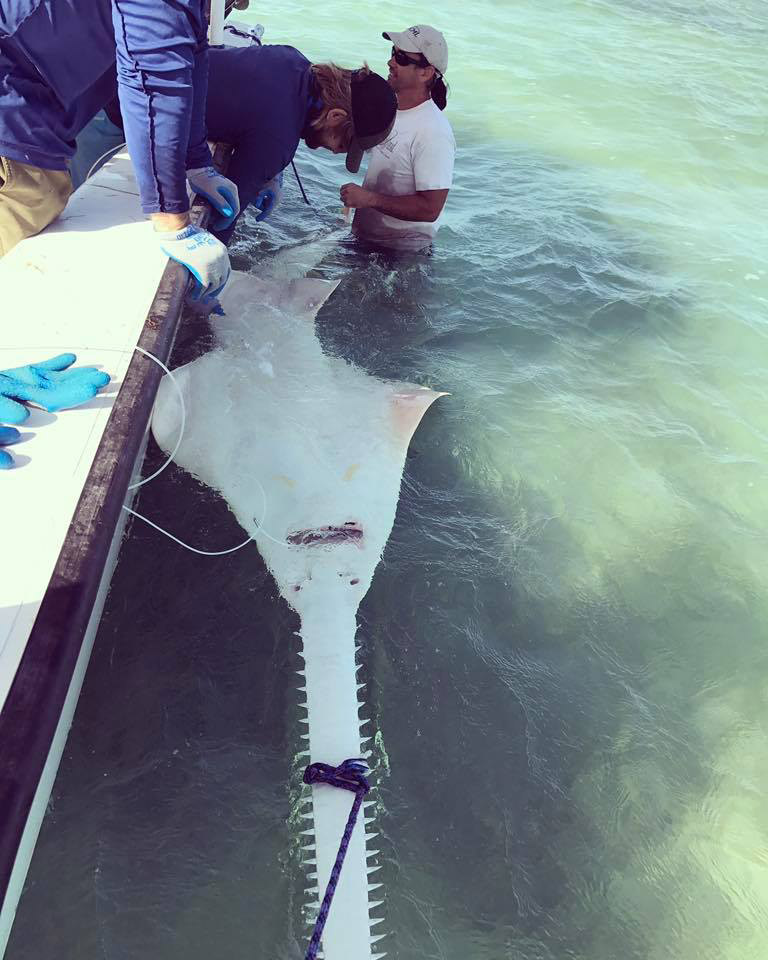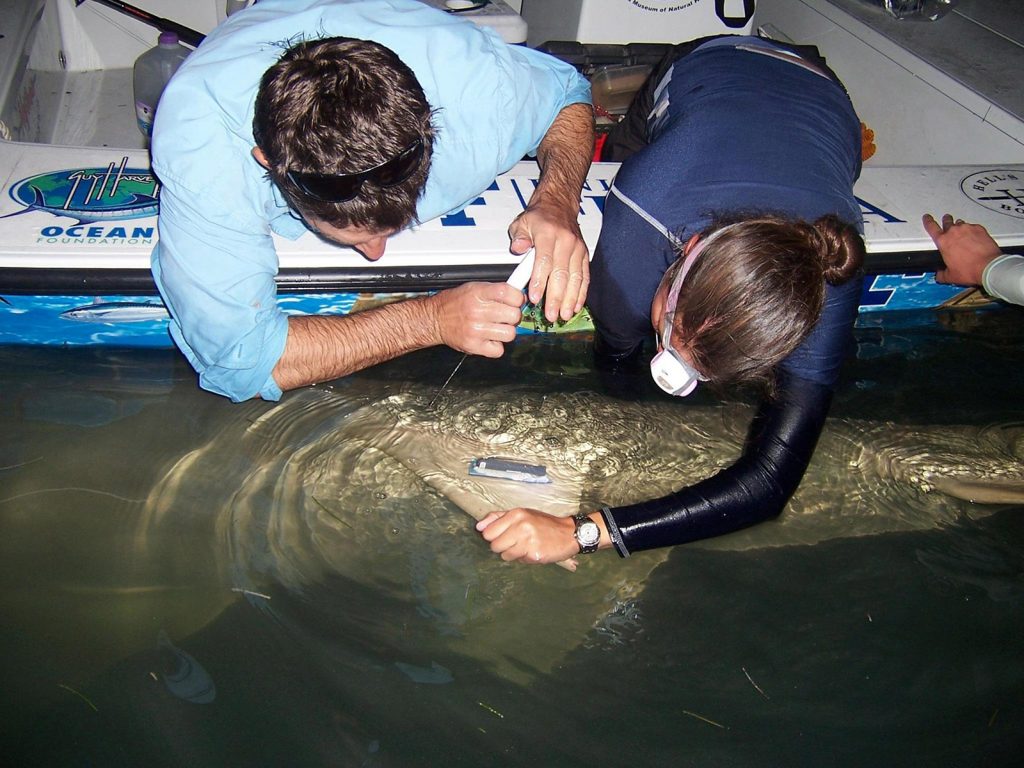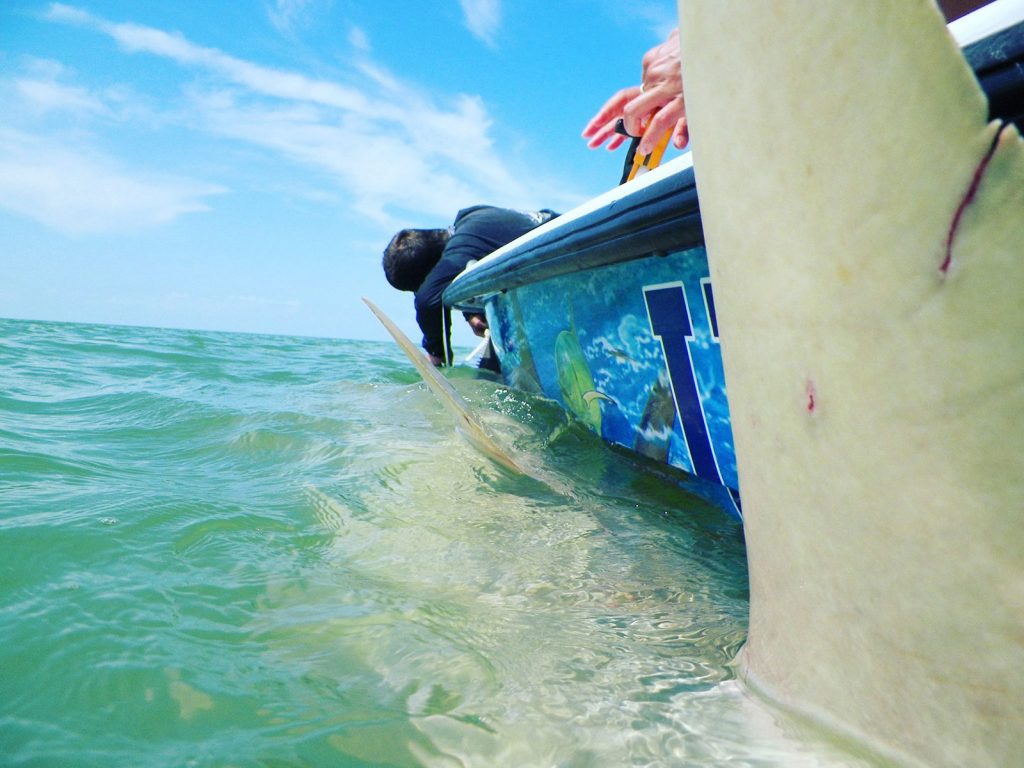Sawfishes live in coastal tropical and subtropical waters, including estuaries and river systems. Once ranging from New York to Texas, the smalltooth sawfish is now largely limited to the waters off the Florida coasts. With populations of sawfishes in decline, all information about these species is invaluable, which is why we have been studying sawfishes at the Florida Museum.
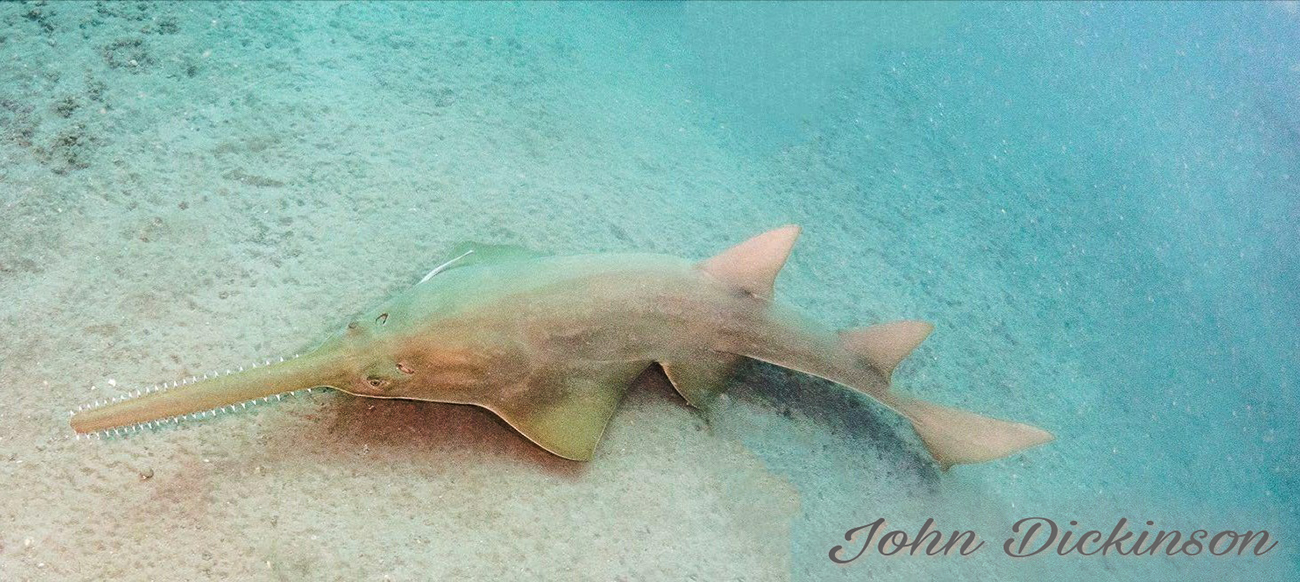
Photo courtesy of John Dickinson
1: Sawfishes are rays, not sharks.
Sawfishes are actually rays. They are elasmobranchs, a group that includes sharks, skates and rays. They are shaped like a shark but with a long rostrum—the “saw” on their snout—that can be about one-third of their total body length. Like other elasmobranch species, they have a cartilaginous skeleton instead of bones, and some grow to 20 feet long.
2: There are five species of sawfishes.
There are five species of sawfishes worldwide, but in Florida waters we now only see the smalltooth sawfish. The largetooth sawfish previously was also encountered in Florida waters, but it has been decades since one has been spotted near our state.
3: They don’t have teeth on their rostra (“saws”).
The things that look like teeth on their rostra (snouts) are actually denticles, which are very specialized scales. Sawfish usually are shy when encountering people and don’t attack with their spiked rostra. Instead, they thrash their snouts from side to side near the sea bottom to stun fish and crustaceans, their preferred food.
4: You cannot legally buy or sell sawfish rostra.
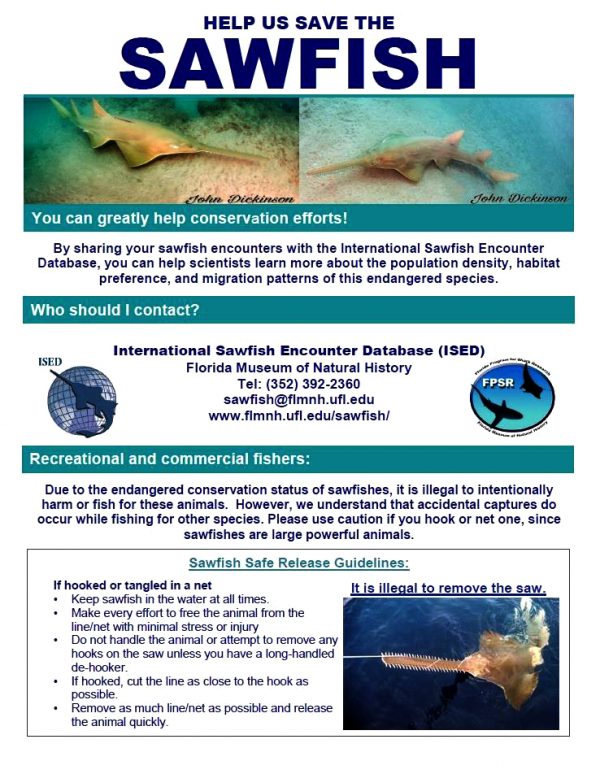
Florida Program for Shark Research image
Sawfishes are protected by the Endangered Species Act in the U.S., so it is illegal to catch, harass, collect, buy or sell any part of any species of sawfish, including its rostrum. Florida has also passed strong laws about catching and buying or selling sawfish rostra or any sawfish parts. These measures were enacted to protect the remaining populations of sawfishes worldwide.
Note: All five species of sawfish are listed as endangered or critically endangered worldwide by the International Union for Conservation of Nature and Natural Resources since populations of all species are decreasing. They are in danger of extinction due to overfishing and habitat modification and loss.
5: Scientists want to know if you see a sawfish!
Sawfish are endangered species and all information about them is important. You can help our conservation efforts by reporting your encounters with sawfish and by helping spread the word about sawfish around the world.
You can report sawfish encounters easily and quickly online or by phone. Here’s more info:
Report a Sawfish Encounter
- Report a sawfish encounter.
- Learn more about the Florida Program for Shark Research at the Florida Museum.
- Learn more about ichthyology at the Florida Museum.

